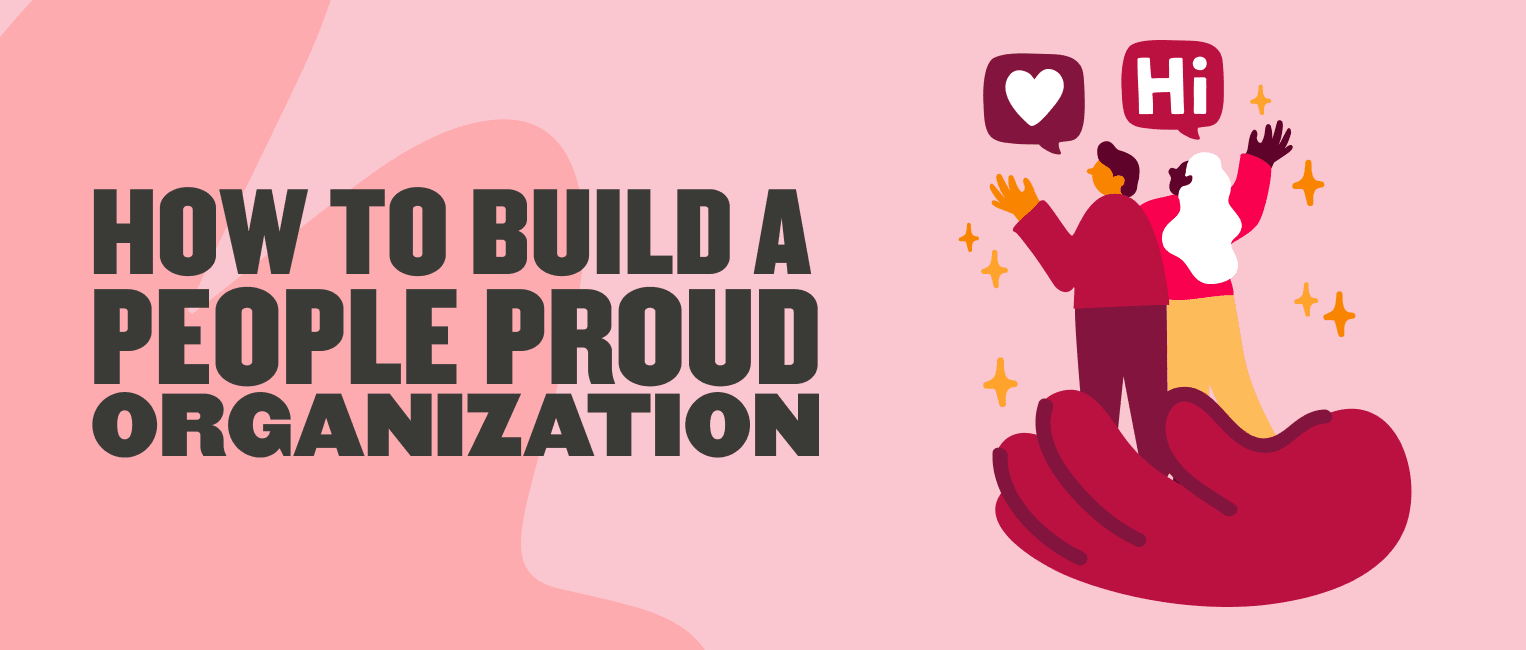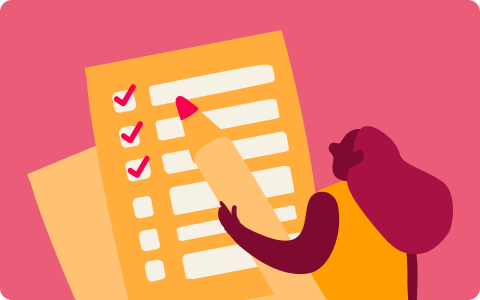Putting people first isn’t just the right thing to do—it’s a smart business strategy. Research shows that companies with highly engaged employees see 23 percent higher profitability and up to 43 percent lower turnover. Organizations that invest in flexibility, wellbeing, and growth consistently outperform their peers in both productivity and innovation.
At HiBob, we call this being people proud. It means building a workplace where people feel seen, supported, and empowered to grow. Where wellbeing and business success go hand in hand.
In today’s fast-changing world of work, this kind of culture isn’t a “nice to have.” It’s a competitive advantage.
So, what does it actually mean to be people proud in practice? And how can leaders make it part of how their organization operates every day?
Let’s take a closer look.
What do people proud organizations look like?
People proud organizations aren’t defined by perks or slogans—they’re built through everyday actions and decisions. Leaders embed care, trust, and empowerment into the way the business runs. That shows up across policies, tools, and the culture itself. Here’s what that looks like in practice:
1. Embedded in structure and culture
People-first principles are woven into how the organization operates, from leadership behaviors to performance expectations. This might look like including employee sentiment in strategic planning, building feedback loops into manager routines, or creating values that are actually lived, not just printed on a wall. People feel heard, trusted, and supported—not just once a year, but every day.
2. Flexibility and autonomy
People proud companies offer flexibility that reflects real life: hybrid or remote work options, adjustable hours, and policies that consider different life stages and responsibilities. For example, allowing team members to block focus time or flex their hours around caregiving can have a big impact. These organizations meet employees where they are, especially younger workers who prioritize balance, meaning, and independence.
3. Meaningful work
Every role connects to something bigger. Motivation rises when people understand how their work contributes to the company’s mission. Regular check-ins, transparent goal-setting, and real-time feedback help employees stay aligned and feel valued. Tools like Bob make it easier for managers to understand what’s working, where people are stuck, and how to tailor growth paths to each person.
4. Growth as a priority
These organizations don’t just hire for today, they invest in learning and development to prepare people for what’s next. Whether it’s training in AI tools, mentorship programs, or learning budgets, people are given the opportunity to grow their skills and expand their impact. This leads to stronger performance, higher retention, and a workforce that’s ready to evolve with the business.
5. Inclusivity and belonging
Diversity isn’t a checkbox—it’s embedded into hiring, communication, and day-to-day interactions. From inclusive benefits to employee-led communities, people proud companies ensure everyone feels seen and supported. Tools like customizable profiles help people express who they are, while anonymous feedback channels ensure every voice can be heard, especially the ones that might otherwise go unheard.
Multigenerational flexibility: Meeting the needs of Gen Z and beyond
Today’s workforce spans more generations than ever before—and each brings different experiences, expectations, and ways of working. People proud organizations don’t try to force everyone into one mold. Instead, they create environments flexible enough to meet individual needs, while fostering shared purpose and respect across the board.
For Gen Z, flexibility, autonomy, and values alignment are non-negotiable. They want meaningful work, digital-first tools, and workplaces that reflect their priorities. A people proud approach gives them the freedom to shape how they work, from hybrid models and asynchronous collaboration to personalized growth paths and real-time feedback.
At the same time, older generations—like Millennials and Boomers—bring a wealth of experience and insight. They tend to value stability, structure, and clear career progression. People proud organizations support those needs too—offering mentoring opportunities, recognition programs, and pathways for continued development.
Rather than managing each group in isolation, the goal is to create a culture that adapts to everyone. Tools like Bob make it easier for managers to listen, spot patterns, and respond thoughtfully—whether it’s surfacing burnout signals, understanding what motivates each team member, or tailoring the employee experience across life stages.
When organizations invest in multigenerational flexibility, the result is more than just retention. It’s collaboration. People learn from each other, bridge generational gaps, and build powerful and inclusive workplaces.
The AI era: Doing “more with more”
Every era of work has been shaped by its defining technology. The Industrial Revolution introduced machines that transformed production. The digital revolution brought computers, the internet, and mobile devices that changed how we communicate and collaborate. And now, we’re entering the AI era.
Like every major shift before it, AI promises to accelerate productivity and reshape how we work. Research from Nielsen Norman Group shows that AI tools can deliver 66 percent productivity gains—the equivalent of decades of natural economic growth. The potential is enormous—but so is the responsibility.
At HiBob, we believe AI should be used to amplify people, not replace them. It should be a co-pilot helping employees write, analyze, plan, and automate the routine, so they can focus on what matters most. The ideas. The decisions. The human touch.
But to realize this potential, companies must support their people through change. That means helping employees learn new tools, upskill for the future, and feel confident using AI in their roles. AI won’t replace people, but people who know how to work with AI will lead the way.
When organizations adopt AI, they tend to follow one of four paths:
- Do the same with less: Use AI to cut costs and reduce headcount.
- Do more with less: Boost output slightly with a smaller team.
- Do more with the same: Empower your existing workforce to produce more through AI.
- Do more with more: Use the gains from AI to reinvest in people, scaling both output and opportunity.
That “do more with more” path is the people proud path. It’s about taking the benefits of AI and using them to grow your workforce, create new opportunities, and expand human potential. When AI becomes a catalyst for upskilling, career development, and innovation, everyone benefits: the business, the employee, and the broader economy.
For example, a company using AI to streamline customer service could use those efficiency gains to train reps in customer strategy or product feedback—turning cost savings into value creation. That’s how you increase Employee Lifetime Value: faster productivity and longer, more fulfilling careers.
Recommended For Further Reading
The future of people proud organizations
People proud organizations don’t just invest in their employees—they build stronger, more resilient businesses. By prioritizing wellbeing, flexibility, and growth, they create the conditions where people can do their best work and where business success becomes a natural outcome.
Empowerment is the common thread. When people are trusted to make decisions, encouraged to grow, and supported through change, they show up with energy, purpose, and commitment. They feel connected to their work, to each other, and to something bigger.
This isn’t a trend. It’s a shift. A long-overdue recognition that putting people first is how you build sustainable success. Not just in moments of growth, but through uncertainty, transformation, and everything in between.
The future belongs to organizations that understand this and choose to lead with empathy, invest in development, and build cultures where everyone can thrive.
At HiBob, our mission is to empower HR professionals with the tools and insights they need to shape people experiences and culture strategies that drive today’s performance and tomorrow’s growth. Because when leaders put people first, they don’t just build great workplaces. They build great businesses.
This is the future of work. Let’s build it together.

From Ronni Zehavi
Ronni has over 25 years of experience in multinational, hi-tech companies. Prior to setting up HiBob, he was an Entrepreneur in Residence at the Silicon Valley based Bessemer Venture Partners. He's the strategic advisor and co-founder of Team8 Cyber Security and CEO of Cotendo, a content delivery network which was acquired by Akamai for $300m.

